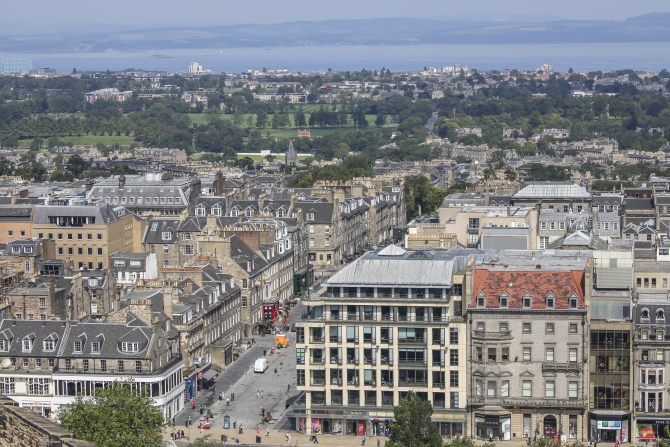A major survey — said to be the biggest of its kind since the start of the 2008 global recession — claims that Scotland’s commercial property market is “stuck in recovery mode”.

According to the Scottish Property Federation (SPF), which notes that the country’s housing market returned to pre-recession levels last year, the value of Scotland’s commercial stock has failed to regain its £51bn pre-crisis worth — “suggesting that the Scottish market has not yet totally recovered from the system shocks of 2007”.
Commenting on its Commercial Real Estate and the Scottish Economy survey, the SPF’s director, David Melhuish, said: “This report paints a picture of an industry that is on the up although the slow recovery in values clearly shows that it is not able to punch as high as it did eight years ago.”
Stressing there was now a much higher degree of risk aversion and that the sector needed to re-engineer itself, Melhuish added: “The industry has had to change the way it finances itself and is now a lot more diverse than it used to be. On the positive side, investor confidence — despite some blips around the referendum — has returned and new construction orders are now on an upward trajectory.”
Based on end of 2013 data, the last year for which complete records are available, the report also found a dramatic increase in the amount of foreign investment in Scotland’s commercial property sector. Before the recession 72 per cent of investment finance was provided by British banks and building societies — by 2013 that figure had fallen to just 43 per cent.
Compiled for the federation by academics at Edinburgh’s Heriot Watt University, the report discovered that Scotland has around £46bn of the UK’s £647bn commercial property stock, or just over seven per cent.
Of that £46bn, 43 per cent (£20bn) is retail, 24 per cent (£11bn) is offices — a higher proportion than anywhere else in the UK outside London where the proportion is 51 per cent — and 22 per cent (£10bn) industrial. Eleven per cent of Scotland’s property, almost £5bn, falls within the hotel, leisure and healthcare sectors.
At 36 per cent, the federation says Scotland has a lower proportion of premium investment grade office stock than the rest of the UK; far lower than central London where the figures is between 90 and 100 per cent, and England as a whole with 84 per cent.
“There is no easy answer as to why there is a relatively lower availability of investment grade office in Scotland compared to other parts of the UK,” says the report. “Perhaps this is a warning shot, given the importance of office employment to the Scottish economy.”
In the retail sector, it found that Glasgow — long considered the second largest retail centre in the UK after London — had slipped to fourth place after Manchester and Birmingham, largely because of an increase in prime retail space the southern cities had to offer.